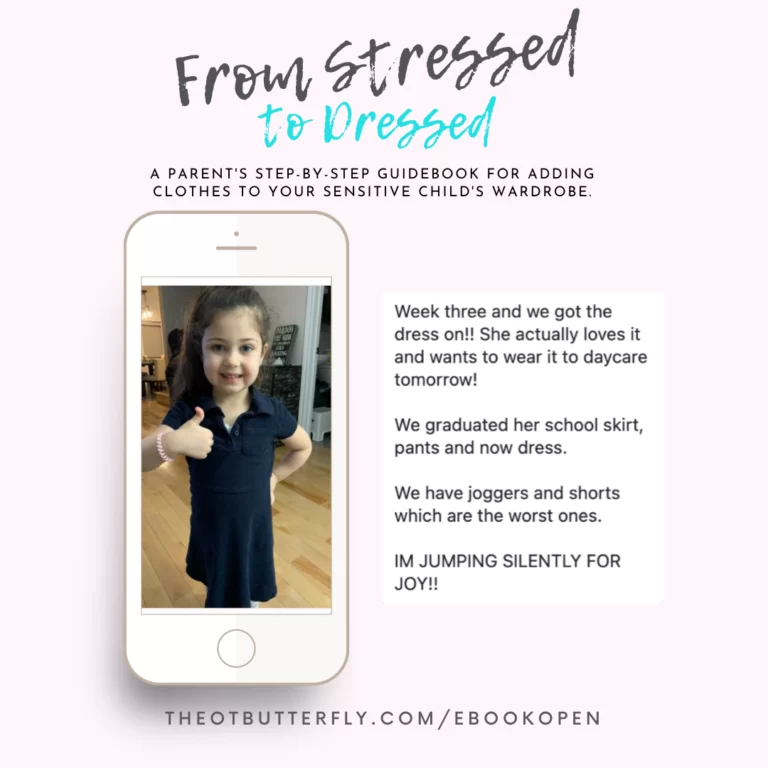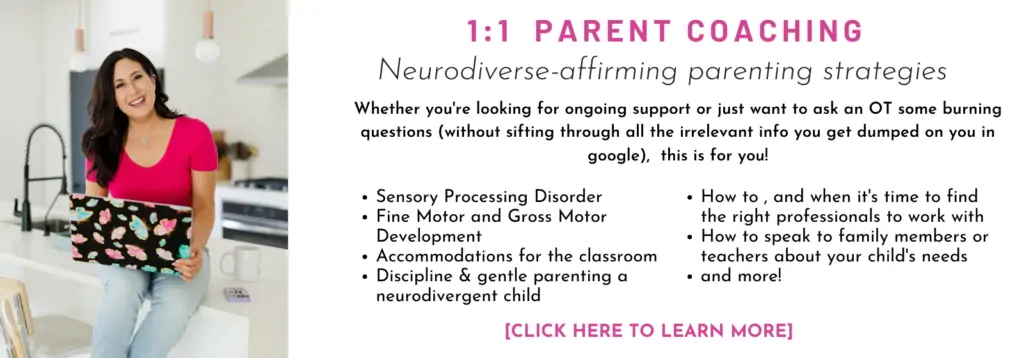Get your FREE sensory profiles cheat sheet >>click here<<
Sick of the clothing battles? Help your sensory sensitive child today.
Dealing with sensory issues with clothing in children is a daily battle. Sometimes, multiple times a day. But how do you know if it’s a clothing sensitivity or just a quirk or personality trait? And what the hell do you do to help them? Keep reading to find out more.
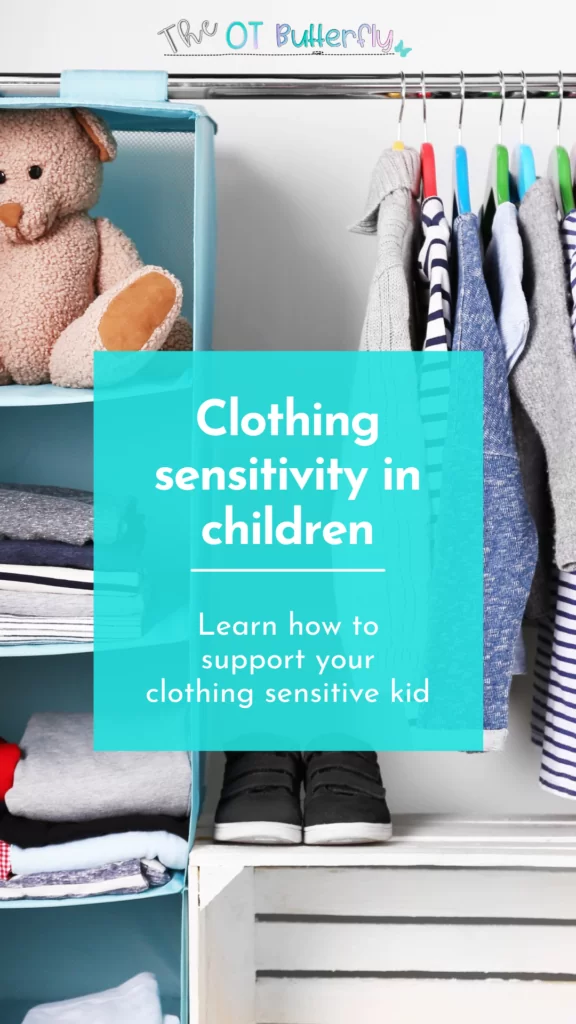
If you want to learn about how to support clothing sensitivity in children, you’re in the right spot. No, I’m not talking about a child who has an obsession with ballet shoes and wears tutus all summer long. I’m also not talking about the child who takes 15 minutes to put his socks and shoes on in the morning (but eventually gets them on with the bribe of a granola bar).
I’m talking about the child who who insists on wearing sandals and shorts in a snow storm because he says the pants are painful on his skin due to his sensory sensitivity.
I’m talking about the fourth grader who can’t tolerate wearing pants, leggings or underwear, so she wears dresses without underwear to school, everyday (and is around the corner from starting puberty).
For the parents who spend hundreds and thousands of dollars on the newest pair of sensory-friendly socks only to have them laying in a pile collecting dust, this blog is for you.
{looking for a comprehensive list to sensory friendly clothes? click here}
Sensory quirks vs. sensory issues in children with clothing sensitivity
Everyone has sensory “quirks”, meaning everyone experiences sensory inputs and sensations that they dislike and some that they like and even some that don’t really spark anything in them.
When that sensory quirk starts impeding daily function in activities that are important and meaningful to that person, then it may be time to seek professional support.
If the child’s sensory issues to clothing impacts their ability to fully participate in school, social interaction or activities at home, then it could be more indicative of Sensory Processing Disorder (or a sensory challenge, since SPD technically isn’t a diagnosis yet, read here for more).
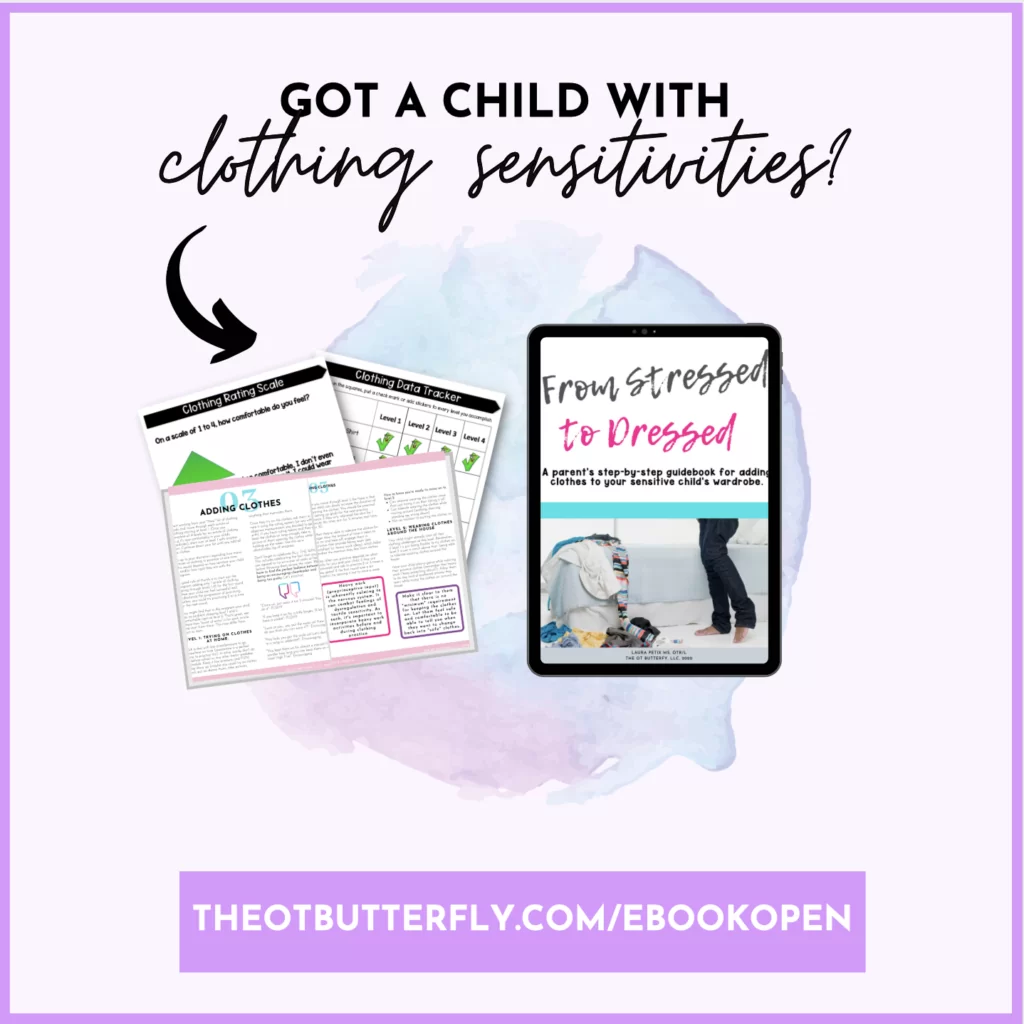
From Stressed to Dressed Guide
If you have a child who has sensitivities to the way that clothes fit, the way that fabrics feel to the point where they won’t wear certain clothes, this guidebook will provide a step-by-step program at home to help add variety to their closet and hopefully decrease your daily clothing battles.
So a child with a sensory quirk might dislike the feeling of jeans, but can tolerate wearing them for that white shirt and jeans family photo on the beach ( you know the one!). A child with sensory challenges would either not be able to put those jeans on without having a full meltdown, or perhaps tolerate wearing it to the photo but have a huge sensory meltdown later.
Signs your child has sensory issues with clothing
A child who has a clothing sensitivity is considered to have a low threshold for tactile input, meaning they register tactile input at a higher rate than neurotypical people.
They can sense every seam, wrinkle or fuzz ball in a sock. They are extremely irritated by tags. They may not be able to tolerate clothes that fit them and rather prefer clothes that are too tight or too big.
In some extreme cases, some children can’t tolerate wearing underwear at all or socks or shoes. When a child has extremely limited clothing to the point where it’s a hygiene issue, safety issue (i.e. wearing shorts in a snow storm) or impacting social life (unable to attend P.E. because can’t wear shoes), then it’s time to seek professional support from an Occupational Therapist.
How do clothing sensitivities impact my child’s behavior?
Aside from being frustrating, and perhaps causing you to be late for appointments or school, clothing sensitivities can have a negative impact on a child’s ability to participate and function in a classroom.
When a child with sensory issues with clothing has to wear something that’s uncomfortable for them, their nervous system (brain) is constantly on high alert, receiving this noxious and aversive stimuli on their body.
The child can’t take their clothes off in class, and they not only have to tolerate the feeling of the fabric or seams on their skin, but they are also expected to follow instructions, participate in a lesson, have a conversation and pay attention.
It takes so much cognitive energy for their brain to filter out the feeling of the clothes and pay attention to the important things.
The result is a brain that is overworked and exhausted, which can contribute to sensory meltdowns and other behaviors.
{click here to read more about sensory meltdowns}
How can I help my child with sensory issues to clothes?
The top two things you can do to help your child through their clothing sensitivities are:
- Don’t be afraid to accommodate them when you can. For example, cutting off tags and finding sensory-friendly clothing. Even if this means being okay with them wearing things that are mismatched or off season (Yes, my child wears Halloween jammies in July!).
- Find ways to practice through play during “neutral” times, aka not when you need to actually leave the house for something. Practice on the weekends or after school. Start off small, like wearing socks for 1 minute while you dance to a silly song. The most important part is to meet them where they’re at: if they can’t tolerate trying socks on for 1 second, how can you expect them to wear socks to school? This is where the just right challenge comes in to play.
When you decide to practice trying on clothes in a fun and playful way, make sure you do this one thing: do it at a time that’s neutral, with absolutely zero pressure to wear anything specific or a time crunch to get out of the house. For example, practice on a Sunday afternoon when there’s no pressure to leave the house. Just spend 10-15 minutes playing a clothing dress up game like one of the ideas below. This way there’s no pressure from you and your child can just be relaxed and have fun.
3 playful ways to practice trying on new clothes
I promise, there are so many different fun ways to inctegrate clothing practice into a game or activity that your child will have fun with. Here are my top 3 ways to practice clothing in a playful way
Animal walk fashion show
Try on one new piece of clothing and do a crab walk/bear crawl/ frog hop all the way across the room. When they get there, they can take it off/try something new and crab walk back across the room. Add music or a timer to make it fun. Repeat!
Roll-an-outfit
Put pieces of clothing out and grab a die. Write down what piece of clothing each number would count for. Have the child roll the dice and that’s what article of clothing they put on. Do a fun dance and then start over.
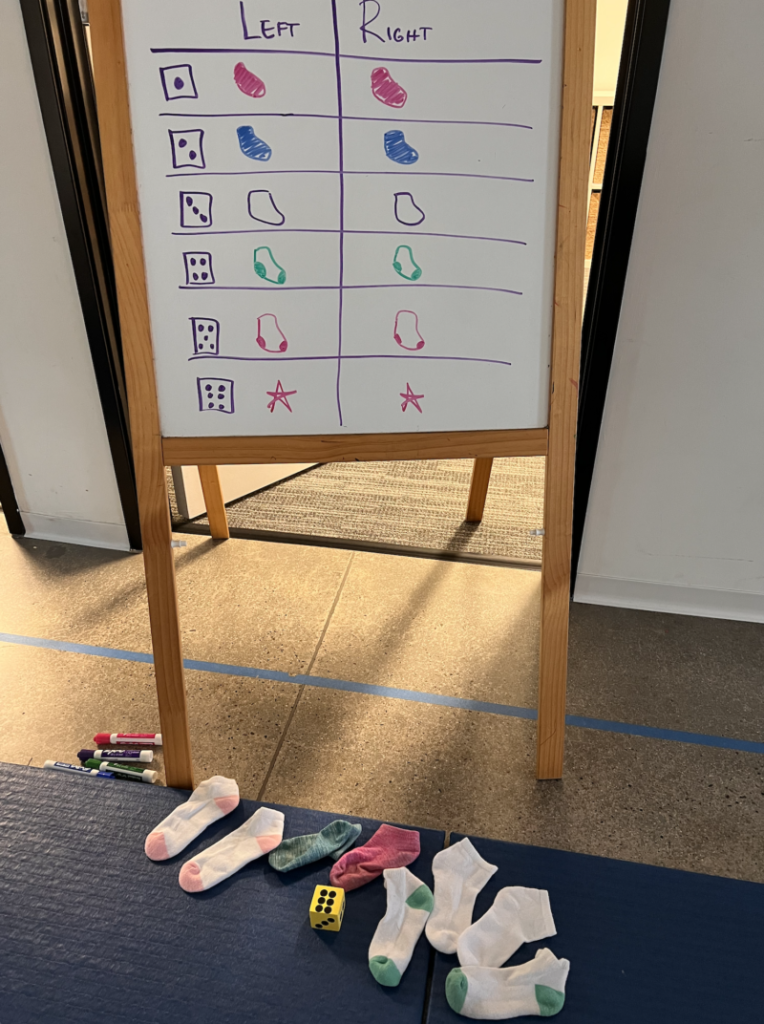
Bubble race
Blow bubbles up in the air and see if your child can change an article of clothing before the last bubble hits the ground. After they have that clothing on, blow bubbles again to stomp/clap and do another round of changing!
Looking for direct guidance and a step-by-step home program to support your child with sensory issues to clothing? Check out my e-book, From Stressed to Dressed which has helped dozens of my clients add new clothes to their clothing sensitive child’s wardrobe.
